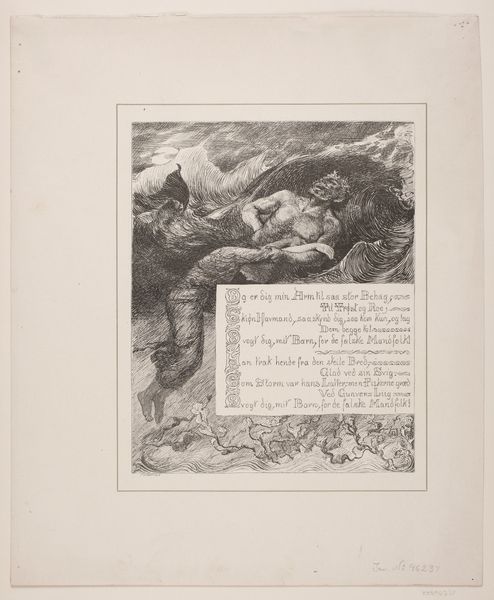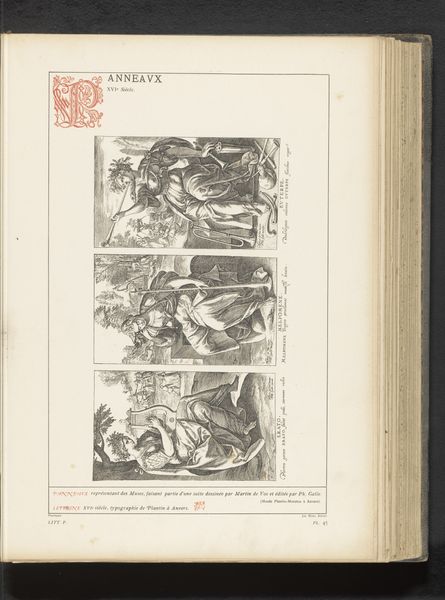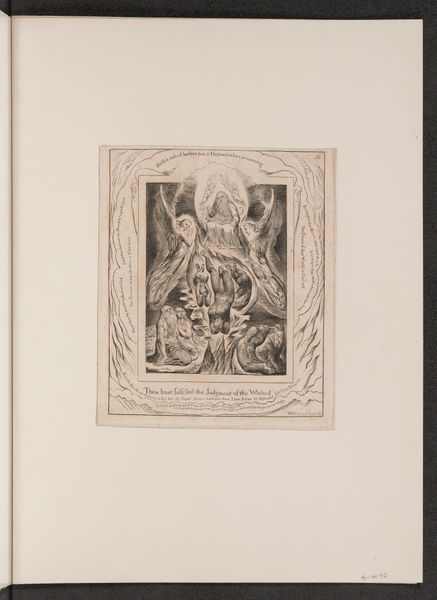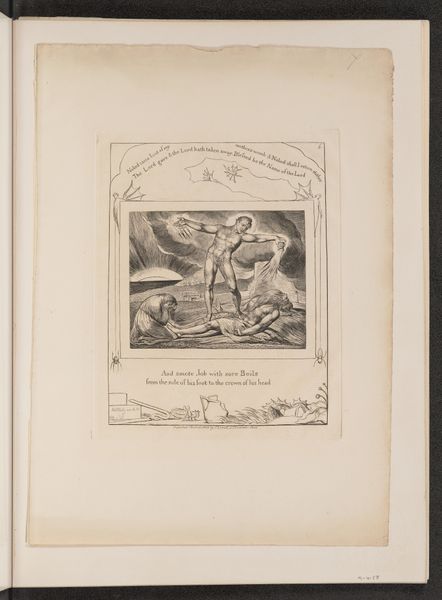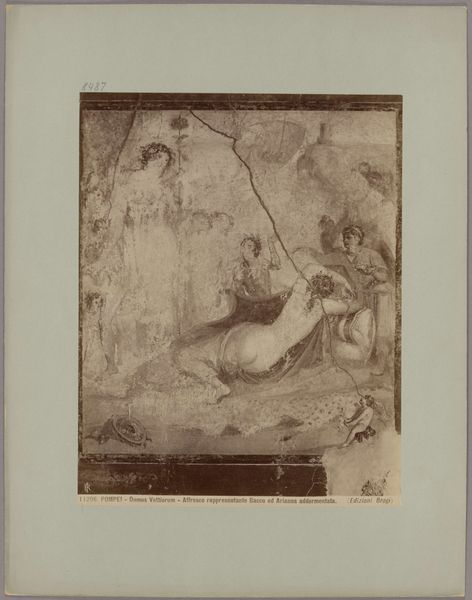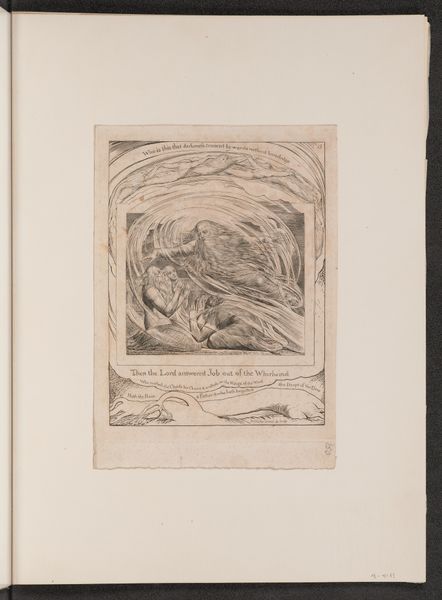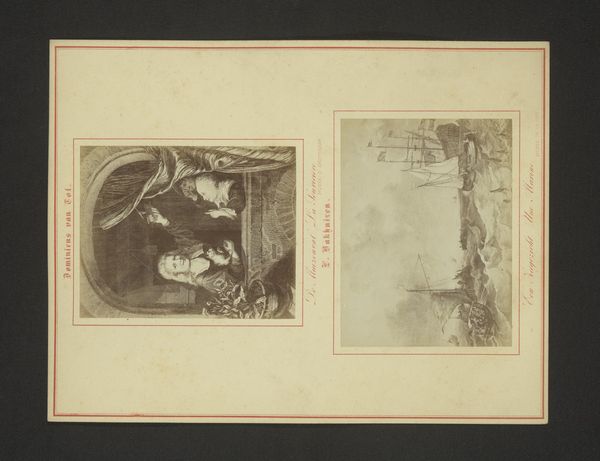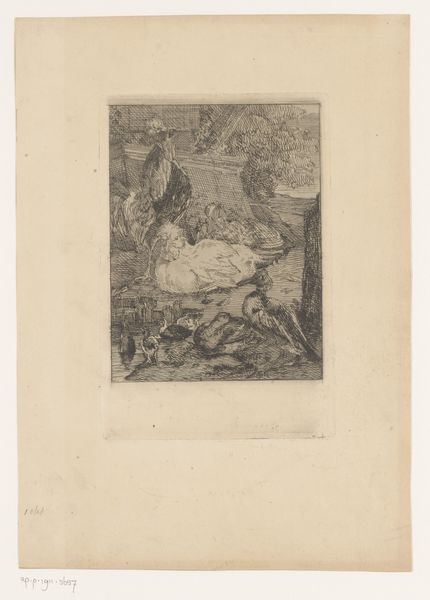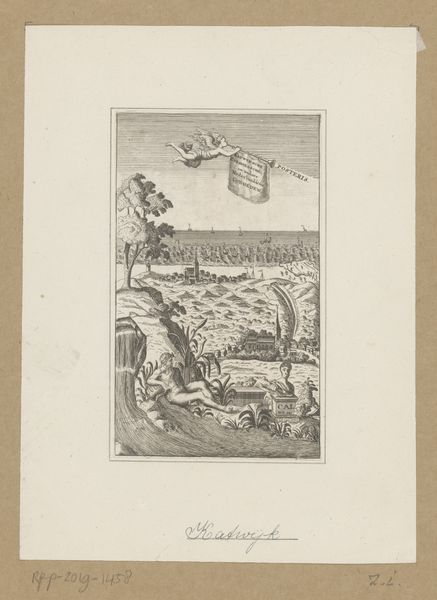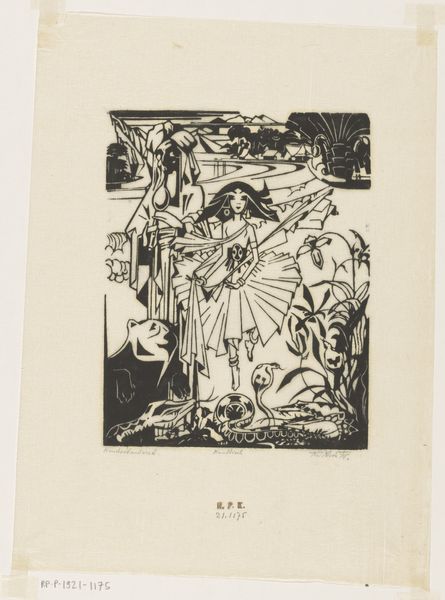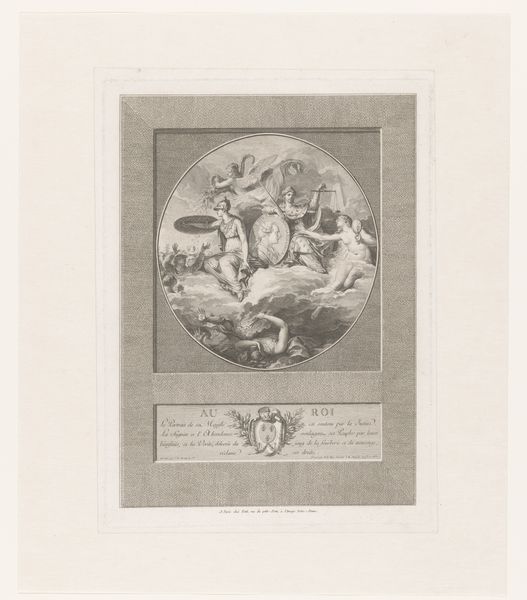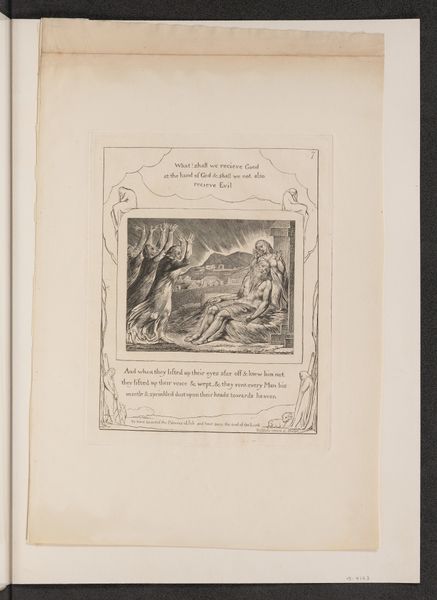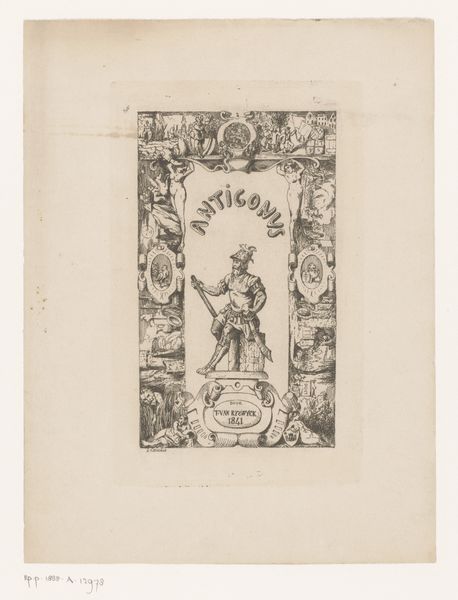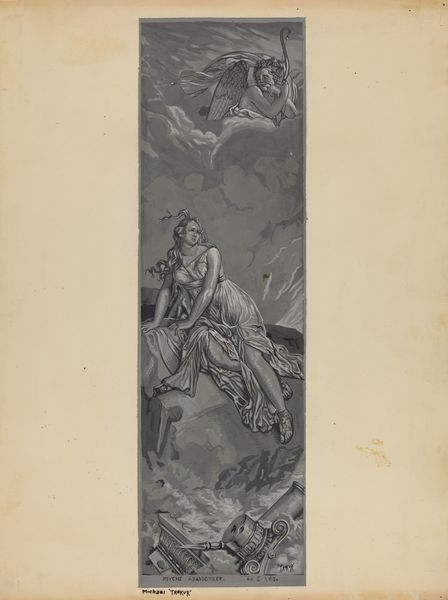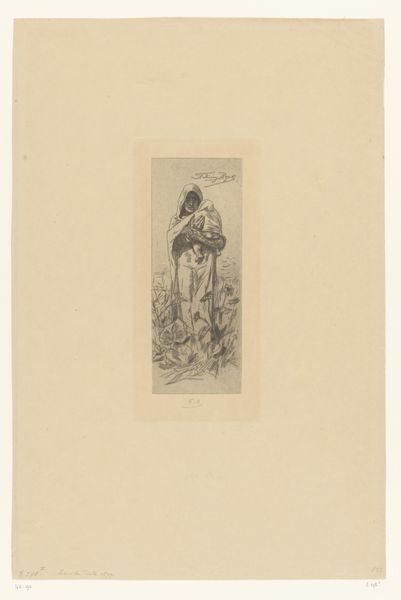
Card for the Gurlitt Exhibition: Imagination and the Child Artist 1881
0:00
0:00
drawing, print, etching, paper
#
drawing
# print
#
etching
#
paper
#
symbolism
Dimensions: 244 × 224 mm (plate); 373 × 269 mm (sheet)
Copyright: Public Domain
Editor: This is Max Klinger's etching, "Card for the Gurlitt Exhibition: Imagination and the Child Artist," from 1881, currently at the Art Institute of Chicago. It's a striking print, filled with layered imagery. It evokes a kind of dreamy, allegorical scene. How do you interpret the work’s formal aspects? Curator: Initially, note the meticulous etching technique. Observe how Klinger uses line to create a range of textures and values. Notice how the upper and lower registers, both decorative frames, visually contrast the central inscription, adding visual complexity. The work prompts questions about artistic intent. Editor: The contrast in visual planes is indeed quite fascinating, yet what's most evocative, from my perspective, is the figures on top; it’s motherly and cosmic all at once! What's the significance of the positioning and gaze between figures? Curator: Note how their arms mirror and intersect each other. A compelling formal feature that creates a kind of cyclical harmony. Their implied gaze invites the eye to continuously circulate within the top section, reinforcing its dominance. Does that imply meaning, or reinforce composition? What do *you* think? Editor: Perhaps it speaks to Klinger's own focus to balance imagination and formal structures. I like that circular feeling... It leads one’s eye from the foreground through the rest of the image, grounding everything. Curator: Precisely. Through analyzing such structural elements, Klinger provides visual cues for engaging the artwork beyond mere observation. Editor: I never would have thought about it like that! I focused on the image alone. Thank you, this gave me a new approach to see the balance of visual composition. Curator: A rewarding close look, I would say. Analyzing solely what you see will help you look closer next time.
Comments
No comments
Be the first to comment and join the conversation on the ultimate creative platform.
